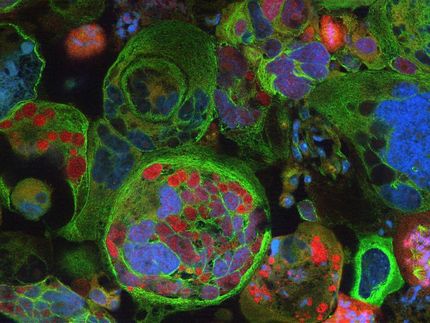Cancer stem cells suppress immune response against brain tumor
M. D. Anderson researchers discover mechanism that helps glioblastomas evade attack
Cancer-initiating cells that launch glioblastoma multiforme also suppress an immune system attack on the disease, scientists from The University of Texas M. D. Anderson Cancer Center report in Clinical Cancer Research.
The researchers demonstrate that this subset of tumor cells, also known as cancer stem cells, stifles the immune response in a variety of ways, but that the effect can be greatly diminished by encouraging the stem cells to differentiate into other types of brain cell.
"We've known for years that glioblastoma and cancer patients in general have impaired immune responses," said senior author Amy Heimberger, M.D., an associate professor in M. D. Anderson's Department of Neurosurgery. "Our research uncovers an important mechanism that shows how that happens. The cancer stem cells inhibit T cell response, and it is these T cells that recognize and eradicate cancer."
Definitions of cancer stem cells vary. To meet the researchers' definition, the cells had to express a marker called CD133, form neurospheres (little round balls) in culture, and be able to recreate glioblastoma multiforme when injected into the brain of a mouse. They also had to be capable of differentiating into specific types of brain cells - neurons, astrocytes and glial cells.
Glioblastoma stem cells have been implicated in tumor resistance to chemotherapy and radiation, and are the believed to be responsible for the relentless recurrence of the disease, said first author Jun Wei, Ph.D., an instructor in the Department of Neurosurgery.
Wei explained that the glioblastoma stem cells suppress T cell response three different ways by:
Producing immunosuppressive cytokines that prevent the responses of T cells. Inducing some T cells to become regulatory T cells, which act as brakes on the immune response. Killing T cells via apoptosis, or programmed cell suicide. This is accomplished via the immunosuppressive protein B7-H1 in the stem cells directly contacting the T cells or by secretion of Galectin-3.
Wei said this immunosuppressive effect was reversed when the team placed the undifferentiated glioma stem cells in a culture medium that causes them to differentiate into the three types of neural cell.
"There are multiple research groups around the country, including ours, trying to develop vaccines or other immunotherapeutics against glioma stem cells," Heimberger said. "Now we have to be cognizant that the stem cell may deliver a fatal blow back to the immune system, which will help us understand how to design immune-based therapies."
New drugs or combination therapies are needed, because after decades of research, little progress has been made in treating glioblastoma multiforme. With the best of care patients survive an average of 14 months.
Other news from the department science

Get the life science industry in your inbox
By submitting this form you agree that LUMITOS AG will send you the newsletter(s) selected above by email. Your data will not be passed on to third parties. Your data will be stored and processed in accordance with our data protection regulations. LUMITOS may contact you by email for the purpose of advertising or market and opinion surveys. You can revoke your consent at any time without giving reasons to LUMITOS AG, Ernst-Augustin-Str. 2, 12489 Berlin, Germany or by e-mail at revoke@lumitos.com with effect for the future. In addition, each email contains a link to unsubscribe from the corresponding newsletter.



















































